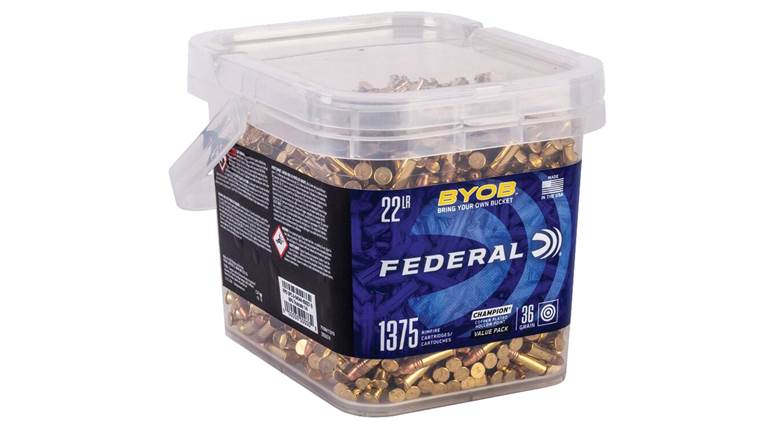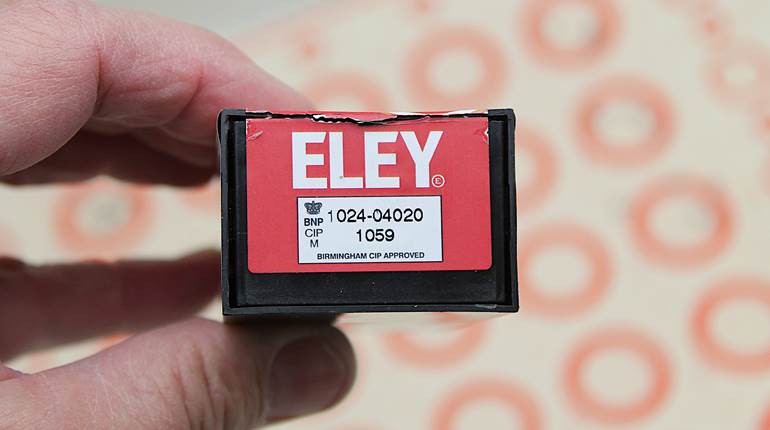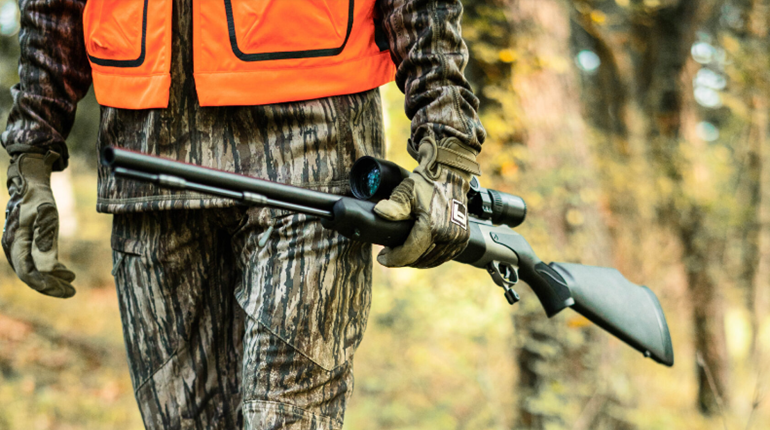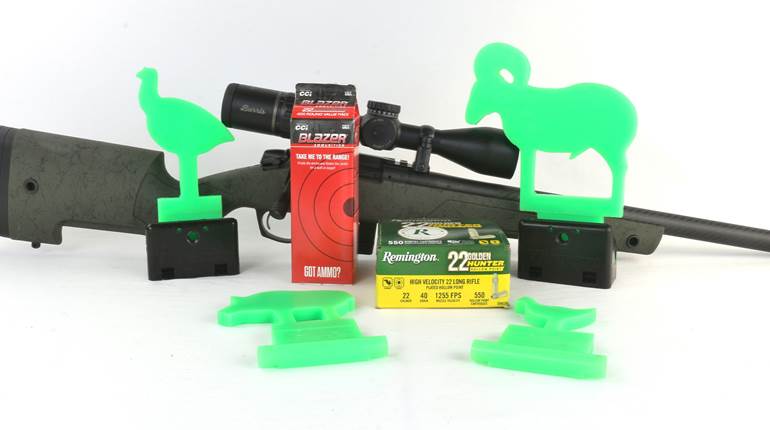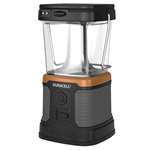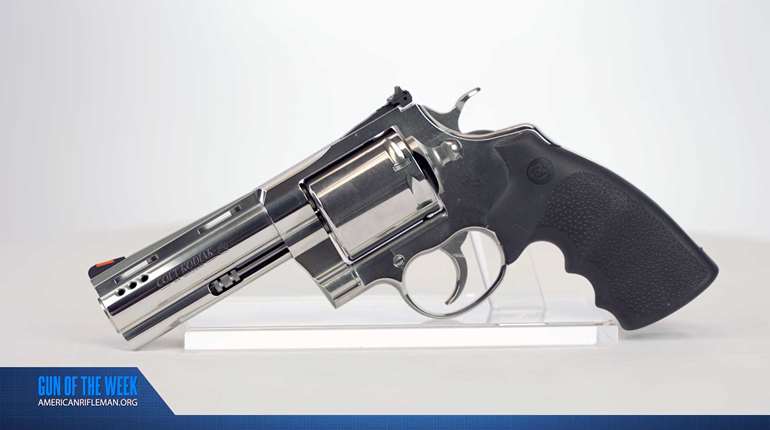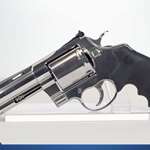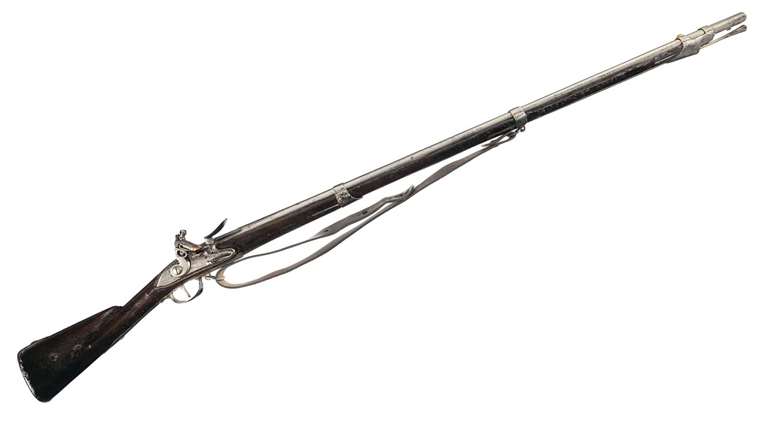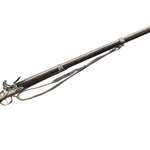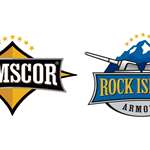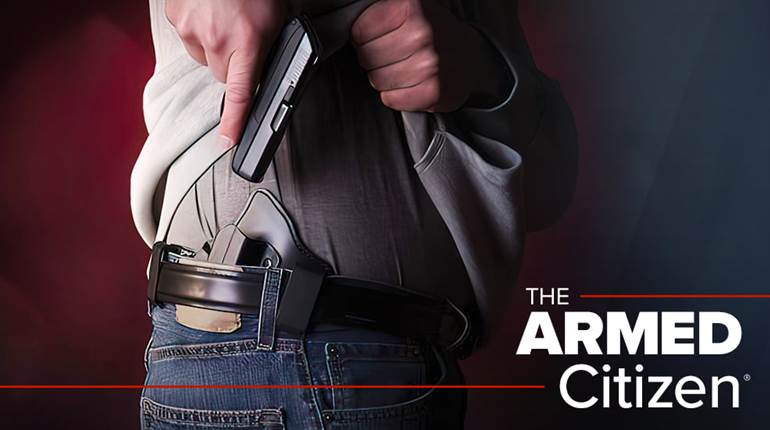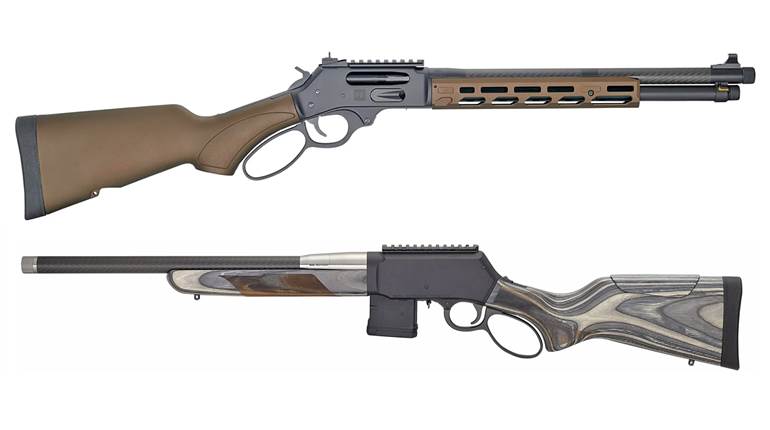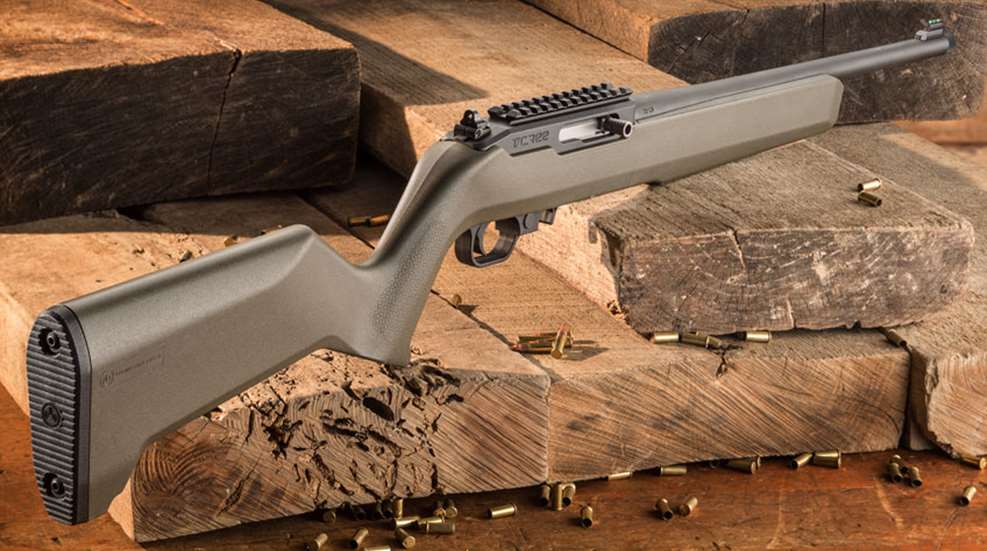
There are few firearms in a shooter’s arsenal more useful than a light .22 rimfire rifle. Whether used for plinking, hunting small game, training new shooters or any other lawful purpose, a good .22 Long Rifle is indispensable. For decades, the semi-automatic rimfire market has been dominated by a handful of models, but now there is a new product to consider in this space: the Thompson/Center Arms T/CR22. This budget-priced, compact and lightweight rifle chambered in .22 Long Rifle is packed with features that will make it attractive to a variety of firearm consumers.
The T/CR22 is a simple blowback design that draws heavily from the Ruger 10/22, and is compatible with many accessories intended for that platform. The fully machined receiver is constructed of 6061 aluminum, and includes an integral Picatinny rail for the mounting of optics. The bolt is machined of stainless steel and uses an oversized handle for additional cocking leverage. The rifle feeds from a 10-round detachable rotary magazine that is equipped with a bolt hold-open tab, and is compatible with 10/22-pattern magazines. The extractor hook articulates from the bolt’s 3-o’clock position, and the fixed ejector is located at 6 o’clock.

The one-piece, injection-molded OD green stock is made by Magpul and is similar, though not identical, to the firm’s Hunter X-22 model. The angled grip and fore-end appear to be clones of the X-22, but the stock on the T/CR22 does not include the adjustable length of pull or comb. Front and rear sling swivel inlets are molded into the stock, and M-Lok-compatible slots at the 6-o’clock position on the fore-end allow for the simple addition of a bipod. The cutout shape of the stock’s toe line is ideal for use with a rear sandbag or rest, making the stock very compatible with supported shooting from the bench. Like most, if not all, injection molded stocks, the fore-end lacks the rigidity of wood or fiberglass, but there was no sign of a degradation of accuracy or point-of-impact shift during our testing when fore-end pressure or position varied.
The 17" button-rifled barrel is finished in matte blue and is threaded 1/2x28 TPI so that it is compatible with rimfire suppressors. A knurled thread protector covers the threads when they are not in use, and a small rubber O-ring at the rear of the threads provides a tight gas seal if a muzzle device is mounted. Unlike many rimfire rifles that are equipped with barrel-mounted open sights, the T/CR22 uses an adjustable rear aperture sight in conjunction with a highly visible green fiber-optic front pipe. Thanks to the position of the rear peep, the sight radius is as long as the rifle’s design will allow. The result is a very useful and durable set of sights that are ideal for instructing new shooters in the use of irons. The sights also make this rifle attractive to those who don’t want to make the subsequent investment in a scope and rings after purchasing the rifle; this one is ready to shoot straight out of the box.
The T/CR22’s controls center around the trigger guard, and include a crossbolt manual safety, a bolt hold-open lever and an oversize magazine release. To load the rifle, the bolt hold-open tab on the magazine is depressed to load the first round—subsequent rounds are loaded normally, and the magazine is inserted into the well. The bolt is cycled and the rifle is ready to fire. The polymer trigger broke at 5 lbs. of pressure after some take-up and a very slight amount of creep—we did not find the trigger to be a detriment to good accuracy during our range testing. Removing the magazine was a bit tricky at first, and was the only ergonomic hiccup that we encountered; we quickly discovered that it is necessary to maintain pressure on the magazine release until the magazine clears the receiver.

Fieldstripping the rifle is accomplished by loosening the captive No. 5/32 hex bolt, centering the safety button in its inlet and lifting the barreled action out of the stock. Drift removal of the trigger group and bolt stop pins allows for the removal of the bolt, recoil spring assembly and bolt handle. With the rifle fieldstripped, the bore can be cleaned from the breech end through a hole at the rear of the receiver designed for just that purpose.
We mounted a scope and fired the rifle extensively using three standard- and high-velocity loads to test both accuracy and reliability. For starters, the rifle functioned with 100 percent reliability throughout our testing save for one Norma cartridge that failed to fire. A close inspection of the case head indicated a good primer strike, so this event can likely be considered an ammunition failure—not unheard of in the rimfire world. The rifle was also function-tested with a SilencerCo Warlock II suppressor mounted, and reliability was not affected by the use of the suppressor.
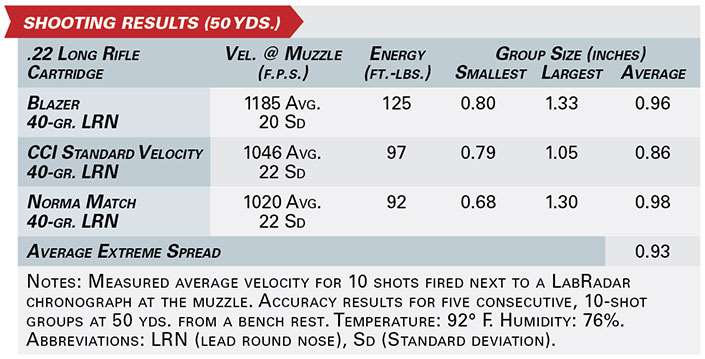
Our test rifle was capable of consistently good accuracy from the bench, and its performance exceeded our expectations. The smallest average 10-round groups at 50 yds., which measured just 0.86", were shot with the CCI Standard Velocity 40-gr. lead round nose load. Though the CCI ammunition shot the best, all three loads produced 10-shot averages of under an inch at that distance. Perhaps best of all, points of impact were consistent across the spectrum of loads tested.
The T/CR22 is a useful, serviceable and fun-to-shoot rifle that provides a great deal of value. The flexibility of either iron sights or hassle-free scope mounting, the ability to add a suppressor without gunsmith intervention and the freedom to use the wide variety of accessories intended for the 10/22 are all attractive attributes of this accurate and reliable rimfire.













